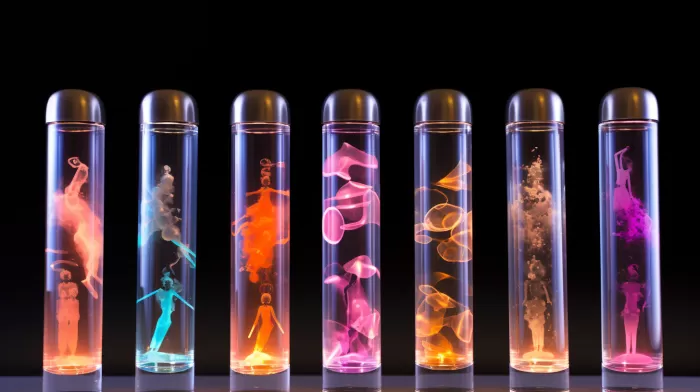When it comes to menopause, there seems to be confusion about natural versus synthetic estrogen and progesterone, and their influence on the body. While some pharmaceutical companies have pushed lab-made, synthetic hormones as safe and effective options for hormone therapy, research shows that natural hormones are actually better for the body. In this article, we will explore the differences between synthetic and natural estrogen and progesterone, and how they impact our health.
Real Versus Synthetic Estrogen
Synthetic estrogens, such as Premarin, Estrace, and Estraderm, are lab-manipulated molecules that do not offer the same health benefits as natural hormones. The truth about the potential dangers of synthetic estrogens was not widely known until 2002. Synthetic hormones were prescribed to women near menopause to manage symptoms and reduce cardiovascular disease risk, despite causing adverse side effects that led many women to quit taking synthetic hormones.
The Women’s Health Initiative (WHI) [1] study in 2002 discovered that synthetic oral estrogen combined with progestin therapy is not as safe as previously believed. Other studies have shown that synthetic hormones can lead to increased breast cancer risk [4], heart attack and stroke risk [5], as well as chances of pulmonary embolism.
In contrast, natural estrogens (estrone (E1), estradiol (E2), and estriol (E3)) are made in a woman’s body and offer significant health benefits without the risks associated with synthetic estrogens. Taking estrogen orally can present some health risks, but applying it topically allows it to reach the bloodstream safely.
Progesterone Versus Synthetic Progestins
The female body needs progesterone, a hormone that it naturally makes, for various health functions. On the other hand, synthetic progestins, such as Provera, Norethindrone, Levonorgestrel, and Norethindrone acetate, are unnatural and cannot be manufactured or metabolized by the body. However, some medical professionals still advocate for synthetic progestins instead of natural, bioidentical progesterone.
Studies have linked synthetic progestins to increased breast cancer risk. The 1995 Nurse’s Health Study [6] found that among 58,000 postmenopausal women, estrogen alone raised the risk for breast cancer by 23%, while synthetic progestin tripled the risk. Other studies [7] [8] support these conclusions.
In contrast, at least eight well-designed studies prove that natural progesterone lowers the risk of breast cancer. There is also a significant difference in how synthetic progestins and bioidentical progesterone affect cardiovascular health. Progestins cause vasoconstriction, while progesterone triggers vascular relaxation. Furthermore, progestins negatively impact cholesterol profiles, while progesterone improves them.
Understanding the difference between synthetic and natural hormones is essential to making informed decisions about menopause treatment and hormone therapy. Natural, bioidentical hormones offer numerous benefits without the significant risks associated with synthetic, lab-made hormones.
[1] {%https://jamanetwork.com/journals/jama/fullarticle/195120%}
[2] {%https://www.nejm.org/doi/full/10.1056/NEJMoa0804748%}
[3] {%https://jamanetwork.com/journals/jama/fullarticle/186510%}
[4] {%https://www.nejm.org/doi/full/10.1056/NEJM199506153322401%}
[5] {%https://jamanetwork.com/journals/jama/fullarticle/195120%}
[6] {%https://www.ncbi.nlm.nih.gov/pubmed/7762899?dopt=Abstract%}
[7] {%https://academic.oup.com/jnci/article/92/4/328/2965044%}
[8] {%https://journals.lww.com/greenjournal/Abstract/2009/01000/Adjusted_Effects_of_Hormone_Therapy_on_Invasive.13.aspx%}



